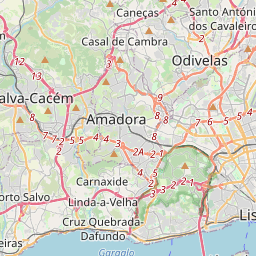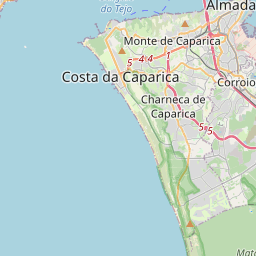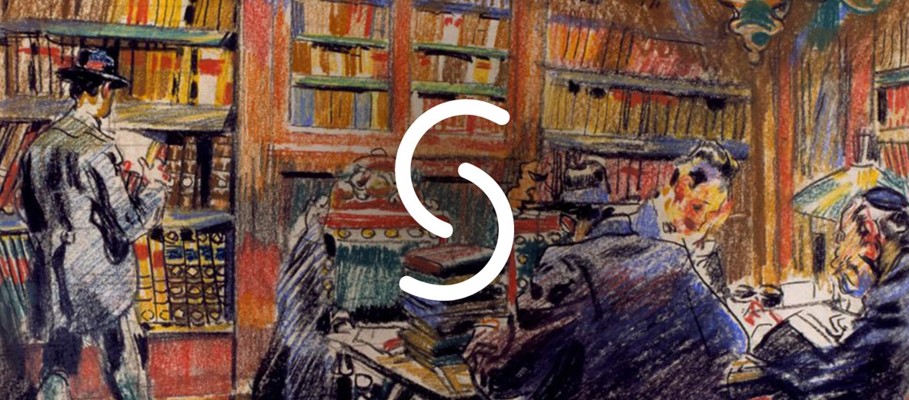Hospital de São José
Item
Country
PT
Name of institution (English)
The National Archive of Torre do Tombo
Name of institution (official language of the state)
Language of name of institution
por
Contact information: postal address
Alameda da Universidade, 1649-010 Lisbon
Contact information: phone number
00351 210037100
Contact information: web address
Contact information: email
mail@dglab.gov.pt
Reference number
PT/TT/HSJ
Type of reference number
Archival reference number
Title (English)
Hospital of São José
Title (official language of the state)
Hospital de São José
Language of title
por
Creator / accumulator
Hospital de São José
Date(s)
1479/1973
Language(s)
por
Extent
8,001 books and 2,723 boxes
Type of material
Textual Material
Physical condition
Good
Scope and content
The Hospital de São José fonds contains documents about the history, evolution and administration of this hospital and its relation with the Misericórdia of Lisbon, including its regiment, regulations, orders, ordinances, decrees about the administration of the institution, its sections, functions and obligations of the workers, patient admissions, income administration, royal and religious privileges, statistics, diseases, schools, etc.
The significance of this collection for the study of the background of the Western Sephardic Diaspora is the location of the hospital before the 1755 Earthquake. It was built on the site of the Judiaria Velha (Old Jewish quarter) of Lisbon. A few documents mention and describe the urbanism of the Jewish quarter, in particular those in the Primeira Repartição (First Office) and Segunda Repartição (Second Office) subsections of the Serviços de Administração Geral / Secretaria (General Administration Services / Secretariat) section. Examples of these documents are the following:
PT/TT/HSJ/A-D-A/032-010/0569, fol. 102: a document mentioning a Jewish public bath on Rua do Chancudo.
PT/TT/HSJ/A-D-A/029-009, livros (books) 1117-1123: reform of the books of deeds of King Manuel I, containing the register of Jewish properties handed over after the expulsion. In these books, there is a description of the Hospital that refers to Jewish urban elements and shops (PT/TT/HSJ/A-D-A/029-009-1/1117, fol. 232-233; PT/TT/HSJ/A-D-A/029-009-02/1120, fol. 336) and a cemetery known as the "Barroca do Almocávar dos Judeus" (PT/TT/HSJ/A-D-A/029-009-02/1120, fol. 3v).
The significance of this collection for the study of the background of the Western Sephardic Diaspora is the location of the hospital before the 1755 Earthquake. It was built on the site of the Judiaria Velha (Old Jewish quarter) of Lisbon. A few documents mention and describe the urbanism of the Jewish quarter, in particular those in the Primeira Repartição (First Office) and Segunda Repartição (Second Office) subsections of the Serviços de Administração Geral / Secretaria (General Administration Services / Secretariat) section. Examples of these documents are the following:
PT/TT/HSJ/A-D-A/032-010/0569, fol. 102: a document mentioning a Jewish public bath on Rua do Chancudo.
PT/TT/HSJ/A-D-A/029-009, livros (books) 1117-1123: reform of the books of deeds of King Manuel I, containing the register of Jewish properties handed over after the expulsion. In these books, there is a description of the Hospital that refers to Jewish urban elements and shops (PT/TT/HSJ/A-D-A/029-009-1/1117, fol. 232-233; PT/TT/HSJ/A-D-A/029-009-02/1120, fol. 336) and a cemetery known as the "Barroca do Almocávar dos Judeus" (PT/TT/HSJ/A-D-A/029-009-02/1120, fol. 3v).
Archival history
The Hospital de São José had its origins in the 16th century. During the 19th century, the hospital establishments of Desterro, Arroios and D. Estefânia went under its custody, creating a complex named Hospital de São José e Anexos (Hospital of São José and Annexes). Later, the hospitals of Santa Maria, Curry Cabral and Santo António dos Capuchos also joined the complex. In 1913, the complex changed its name to Hospitais Civis de Lisboa. This institution supervised the documents and archives of the hospitals. Their records have been regularly sent to Torre do Tombo since 1979 (incorporations in 1979, 1980, 1994, 2001, 2003 and 2004).
Sources:
Administrative / Biographical history
The Hospital Real de Todos os Santos (Royal Hospital of Todos os Santos), currently Hospital de São José (Hospital of São José), was founded by King João II with the purpose of creating a large hospital to assist the sick and the poor. With the funds of other small hospitals of the city and private donations, the construction started in 1492, and ended during the reign of King Manuel I. It was built near the Convent of São Domingos, in the area of the Judiaria Velha (Old Jewish quarter) of Lisbon. Its statutes were published in 1504. They stipulated the functions of the Hospital as well as the number of workers and their roles, obligations, and payments. The Hospital had its own pharmacy, kitchen, pantry, and laundry, as well as an altar where patients could attend the Divine Office. In the reign of João III, a house for the mentally ill was added. The building was damaged by two fires, one in 1601 and another in 1750. In 1755, after the Great Earthquake, it was completely destroyed. It took twenty years to move the Hospital to a permanent location, the Colégio de Santo Antão (College of Santo Antão), which once belonged to the Society of Jesus. The inhabitants of Lisbon, including nobility and clergy, helped to move the patients to the new location. The hospital also changed its name to Hospital Real de São José (Royal Hospital of São José) in honour of the reigning King José I. It lost the "Real" (royal) title after the Republic, but it kept functioning as before. The 19th century brought new changes. New medical discoveries, as well as the outbreak of new diseases, led to the annexation of new buildings and hospitals. This hospital complex was named Hospital Real de São José e Anexos. However, the Hospital still faced a lot of difficulties. The much-needed reorganisation occurred in 1901 by the “enfermeiro-mor” (head nurse) José Curry da Câmara Cabral, who wrote new regulations for the hospital. In 1913, the complex name changed to Hospitais Civis de Lisboa. During the 20th century, several modifications were made in its function and structure. At present, the Hospital of São José is still functioning.
Access points: locations
Access points: subject terms
Access points: document types
System of arrangement
The fonds is composed of 9 subfonds, corresponding to different institutions related to the Hospital of São José, 8 sections regarding different duties of the hospital (administration, clinic services, etc.) and a few separate storage units.
Access, restrictions
Records are accesible, with exception of personal data of people dead up to 50 years ago (if the death date is unknown, the time is 75 years since the date of the documents).
Finding aids
Saraiva, Maria Teresa, Fernando Carapinha and Idalina Fino. 2004. "Hospital de São José: inventário" (Inventory of the Hospital of São José). Typewritten finding aid. (L 683).
Published findind aids:
Links to finding aids
Author of the description
Inês de Sá, 2021
Bibliography
Linked resources
Filter by property
| Title | Alternate label | Class |
|---|---|---|
| Arquivo Nacional da Torre do Tombo | Collections (official language of the state) |



















